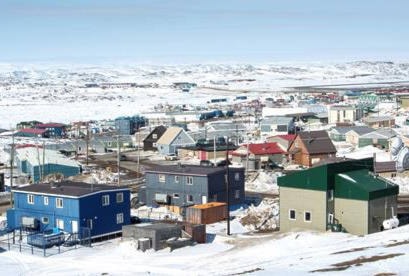Immigration continues to drive population growth across B.C., according to the latest census data issued Wednesday
About 22 per cent of Canadians are immigrants – the highest share of the population since 1921. In B.C., immigrants make up about 28 per cent of the population, or 1.3 million people.
Most of Canada’s migrants are from Asia, but more immigrants than ever before are coming from Africa, ahead of Europe for the first time.
“Immigrants are diffusing across the country,” said Michael Haan, a sociology professor at Western University in London, Ont.
“What it’s forcing us to do, collectively, is think about our entire nation as being composed of immigrants, rather than just major cities.”
THIRD: Immigration - On Census day 21.9% of pop. reported as a landed immigrant/perm. res in #Canada. Second highest # since the 1921 census
— Ashley Wadhwani (@ashwadhwani) October 25, 2017
About six in 10 immigrants were admitted under Canada’s plan to enhance and promote economic development, according to the census. Three in 10 were allowed to enter so they could join family already in the country. One in 10 came to Canada under refugee status.
In B.C., a proportion of people who migrated here are here to stay, with second-generation immigrants representing 22 per cent of the 4.6 million residents.
One third of B.C. residents reported to be visible minorities – the highest rate compared to other provinces, and a trend Statistics Canada predicts will make up a full one third of the country by 2036.
Nearly half of major metropolitan areas are comprised of visible minorities, noticeably Toronto and Vancouver, said Doug Norris, chief demographer at Environics Analytics. But he added the figures are also on the rise in places like Saskatoon, Regina, Winnipeg, and Calgary.
“Places that people didn’t think were culturally diverse are becoming now culturally diverse.”
Aboriginal families grow, leading to more children than seniors
Western Canada had the largest overall increase in the Indigenous population during the last decade.
About 25 per cent of Aboriginal people reported to be 14 years or younger, compared to 17 per cent in non-Aboriginal populations. That’s nearly four times the number of Aboriginal people aged 65 and older.
Like all young people struggling to find affordable housing, Aboriginal people are also grappling with find adequate living conditions in Western Canada.
One in five Indigenous people reported living in a dwelling that needs “major repairs,” the census found, while Aboriginal children face a poverty rate of about 30 per cent, compared to 17 per cent in the wider population.
ALSO: Although First Nations pop. grew at slowest pace in #WesternCanada (+32.2%), region saw largest total increase in FN pop. (+134,550) pic.twitter.com/yj8pVCnHtl
— Ashley Wadhwani (@ashwadhwani) October 25, 2017
Key figures from the 2016 census:
The release of data marks just the latest — and second-to-last — in a year-long series of statistical snapshots of the Canadian condition, one that also heralded the return of data from the much-maligned long-form census for the first time in a decade.
35,151,728: Canadian population on census day 2016.
5: Percentage increase in the population between 2011 and 2016.
16.9: Proportion of the national population over age 65, a historic high.
41: Average age of the Canadian population.
7,974,370: Canadians whose mother tongue is neither English nor French. See more >
34.7: Percentage of people age 20 to 34 living with their parents, a historic high. See more >
$70,336: Median household income in 2015, the most recent year available. See more >
10.8: Percentage increase in median household income between 2005 and 2015.
4.8 million: Canadians, including children, living below the poverty line in 2015.
1.2 million: Number of children living in low-income households in 2015.
73,000: Number of same-sex couples in Canada. See more >
14.5: Percentage of Canadian seniors over age 65 living in low income in 2015.
97.8: Response rate from the long-form census, the highest Statistics Canada has ever recorded. See more >
With files from Jordan Press, The Canadian Press
@ashwadhwani
ashley.wadhwani@bpdigital.ca
Like us on Facebook and follow us on Twitter.



